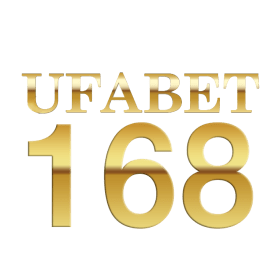comparison Is logic AI a complement to learning AI? Artificial Intelligence Stack Exchange

The concepts learned in the compositional experiment capture discriminative sets of attributes that are intuitively related to the concept they describe. We show the concept METAL in both (A) the simulated and (B) extracted environment. Example image from the CLEVR dataset (A) with the corresponding symbolic annotation of a single object (B), namely the green cylinder. While human intellectual potential serves as a benchmark against which all artificial agents are measured, human-like behavior is not equivalent to intelligence. Human behavior tends to have a high degree of variance and is prone to errors and irrationality, making it difficult to assert that all human behavior is intelligent. The Turing test, although often cited and misused, is used to determine if an agent (such as ChatGPT) has achieved human-level intelligence.
In this case, a statement of the form ∀xP(x) becomes a data-dependent generalization, which is not to be assumed equivalent to a statement ∀yP(y), as done in classical logic. Such statements may have been learned from different samples of the overall potentially infinite population. On the other hand, a statement of the form ∃xP(x) is trivial to learn from data by identifying at least one case P(a), although reasoning from ∃xP(x) is more involved, requiring the adoption of an arbitrary constant b such that P(b) holds. Using the CLEVR CoGenT dataset (Johnson et al., 2017), we test if the acquired concepts are general enough to extend to unseen instances and combinations of attributes.
Assessing the strategic centers for VR and AI business success
Supervised learning maps the input data to the output data, and is extensively used in data classification problems. The chief motivation I gave for symbol-manipulation, back in 1998, was that back-propagation (then used in models with fewer layers, hence precursors to deep learning) had trouble generalizing outside a space of training examples. However, as imagined by Bengio, such a direct neural-symbolic correspondence was insurmountably limited to the aforementioned propositional logic setting. Lacking the ability to model complex real-life problems involving abstract knowledge with relational logic representations (explained in our previous article), the research in propositional neural-symbolic integration remained a small niche. This idea has also been later extended by providing corresponding algorithms for symbolic knowledge extraction back from the learned network, completing what is known in the NSI community as the “neural-symbolic learning cycle”. Symbols also serve to transfer learning in another sense, not from one human to another, but from one situation to another, over the course of a single individual’s life.
- And if you are interested in learning more about Machine Learning and its impact, you can read our article on the topic here and learn about Deep Learning here.
- You can create a sort of momentum towards a solution by writing an instruction prompt “let’s think step by step”.
- As mentioned in section 3.1, the tutor looks for the smallest set of concepts that discriminates the topic from the other objects in the scene, based on the symbolic ground-truth annotation of the scene.
- Recall that the ultimate purpose of H is to compute the success probabilities of plans (see Section 2.2).
- And we talked about this last time, so I don’t want to get into that.
This requires a mechanism for identifying meaningful combinations of attributes from their sensori-motor data streams and attaching a symbolic label to each of these combinations. Second, the agents must be able to recognize instances of particular concepts and distinguish concepts from each other. For representing concepts, we make use of prototype theory (Rosch, 1973), although also other approaches have been proposed in the psychological literature (McCarthy and Warrington, 1990; Squire and Knowlton, 1995; Patalano et al., 2001; Grossman et al., 2002). We introduce the Deep Symbolic Network (DSN) model, which aims at becoming the white-box version of Deep Neural Networks (DNN). The DSN model provides a simple, universal yet powerful structure, similar to DNN, to represent any knowledge of the world, which is transparent to humans. The conjecture behind the DSN model is that any type of real world objects sharing enough common features are mapped into human brains as a symbol.
An Approach to Combining Explanation-based and Neural Learning Algorithms
Second, it can learn symbols from the world and construct the deep symbolic networks automatically, by utilizing the fact that real world objects have been naturally separated by singularities. Third, it is symbolic, with the capacity of performing causal deduction and generalization. Fourth, the symbols between them are transparent to us, and thus we will know what it has learned or not – which is the key for the security of an AI system. Fifth, its transparency enables it to learn with relatively small data. Last but not least, it is more friendly to unsupervised learning than DNN. We present the details of the model, the algorithm powering its automatic learning ability, and describe its usefulness in different use cases.

The discipline of machine learning employs various approaches to teach computers to accomplish tasks where no fully satisfactory algorithm is available. In cases where vast numbers of potential answers exist, one approach is to label some of the correct answers as valid. This can then be used as training data for the computer to improve the algorithm(s) it uses to determine correct answers. For example, to train a system for the task of digital character recognition, the MNIST dataset of handwritten digits has often been used.
Read more about https://www.metadialog.com/ here.
Is chatbot a LLM?
The widely hyped and controversial large language models (LLMs) — better known as artificial intelligence (AI) chatbots — are becoming indispensable aids for coding, writing, teaching and more.







